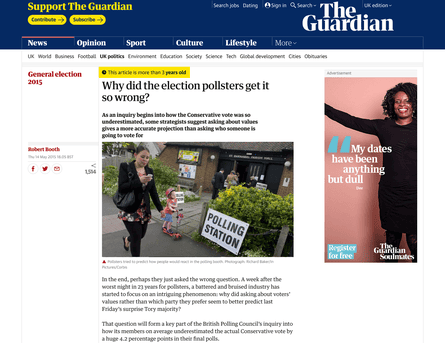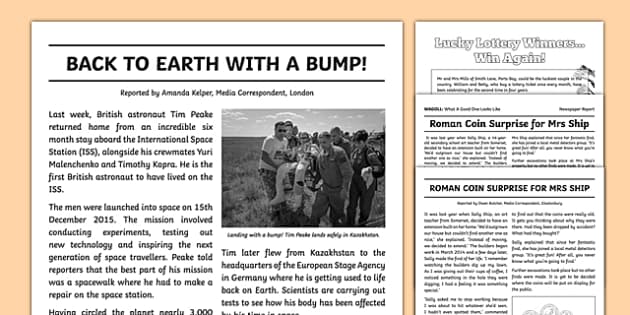Not known Details About News Articles
Not known Details About News Articles
Blog Article
Not known Facts About News Articles
Table of ContentsThe Basic Principles Of News Articles News Articles - The Facts9 Simple Techniques For News ArticlesNews Articles Things To Know Before You Get ThisThe smart Trick of News Articles That Nobody is Discussing
Excellent understanding of different topics gives students an one-upmanship over their peers. Even though digital and social networks are conveniently easily accessible, we should not neglect exactly how crucial it is to read the newspapers. Moms and dads should try and inculcate the behavior of reviewing a paper as a daily routine to proceed the heritage of the revered print tool.Information stories likewise consist of at the very least one of the following crucial characteristics loved one to the designated target market: closeness, prestige, timeliness, human rate of interest, quirk, or consequence.
Within these limits, information stories also intend to be detailed. Amongst the bigger and extra recognized newspapers, fairness and equilibrium is a significant factor in offering details.
Papers with a worldwide audience, for instance, often tend to utilize an extra formal style of writing. The specific selections made by a news electrical outlet's editor or editorial board are commonly accumulated in a design guide; common style overviews include the and the US News Style Book. The major goals of news writing can be summed up by the ABCs of journalism: accuracy, brevity, and quality.
Facts About News Articles Uncovered
Generally, reporters will not make use of a lengthy word when a brief one will certainly do. They use subject-verb-object building and dazzling, active prose (see Grammar). They provide narratives, instances and allegories, and they rarely rely on generalizations or abstract ideas. News writers attempt to avoid utilizing the exact same word greater than once in a paragraph (sometimes called an "resemble" or "word mirror").
Headings often omit the subject (e.g., "Jumps From Boat, Catches in Wheel") or verb (e.g., "Cat woman lucky"). A subhead (also subhed, sub-headline, subheading, caption, deck or dek) can be either a subordinate title under the main headline, or the heading of a subsection of the short article. It is a heading that precedes the primary message, or a group of paragraphs of the main message.

Extra billboards of any of these kinds may appear later on in the short article (particularly on succeeding web pages) to attract further analysis. Such billboards are additionally made use of as reminders to the write-up in other sections of the publication or website, or as ads for the piece in various other magazine or websites. Common structure with title, lead paragraph (recap in bold), other paragraphs (information) and get in touch with information.

Example of a hard-lead paragraph NASA is proposing another space project. The spending plan demands about $10 billion for the project.
The NASA announcement came as the agency requested $10 billion of appropriations for the project. An "off-lead" is the 2nd most crucial front page information of the day. The off-lead shows up either in the top left corner, or directly listed below the lead on link the. To "bury the lead" is to begin the article with history info or details of secondary relevance to the viewers, requiring them to find out more deeply into a post than they need to need to in order to discover the necessary points.
The 7-Minute Rule for News Articles
Common use is that or 2 sentences each form their own paragraph. Journalists typically explain the organization or structure of a newspaper article as an upside down pyramid. The crucial and most interesting elements of a tale are placed at the beginning, with sustaining details complying with in order of decreasing value.
It allows individuals to explore a subject to only the deepness that their curiosity takes them, and without the imposition of details or nuances that they can think about unimportant, however still making that information offered to more interested viewers. The upside down pyramid structure likewise makes it possible for articles to be trimmed to any type of approximate length during layout, to fit in the area offered.
Some writers begin their tales with the "1-2-3 lead", yet there are many type of lead readily available. This format usually begins with a "5 Ws" opening up paragraph (as explained above), followed by an indirect quote that serves to sustain a major element of the initial paragraph, and after that a direct quote to sustain the indirect quote. [] A kicker can describe numerous things: The last tale current program; a "satisfied" tale to finish the show.
Longer posts, such as publication cover articles and the pieces that lead the inside sections of a newspaper, are known as. Attribute tales vary from straight information in numerous means.
A Biased View of News Articles
A feature's first paragraphs typically connect an intriguing minute or event, as in an "anecdotal lead". From the particulars of an individual or episode, its sight swiftly broadens to generalities concerning the tale's subject.

The Editor's Tool kit: A Recommendation Guide for Beginners and Professionals (2001) Allan M. Siegal and William G. Connolly. The this New York City Times Guidebook of Style and Use: The Official Style Guide Utilized by the Writers and Editors of the Globe's Most Authoritative Paper (2002) M. L. Stein, Susan Paterno, and R.
Report this page